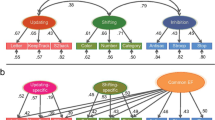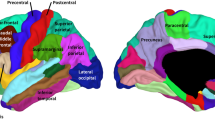Abstract
This study seeks to empirically explore the relation between multilingual learning experiences and language aptitude. Through employing LLAMA aptitude test battery (Meara, 2005) and a probabilistic version of the serial reaction time (SRT) task (Kaufman et al., 2010), scores from 24 Chinese-English bilinguals and 24 Tibetan-Chinese-English trilinguals were analyzed with One-way Analyses of Variance (ANOVA). LLAMA-B, E, and F sub-tests measured explicit language aptitude, while LLAMA-D sub-test and SRT task measured implicit language aptitude, a cutting-edge that has gained sway in aptitude research. Qualitative and quantitative results showed that trilingual group performed better on the LLAMA-E sub-test than bilingual group, whereas bilingual group outperformed trilingual group on the SRT task. These findings suggested that trilinguals might possess higher explicit aptitude but lower implicit aptitude than bilinguals. Thus, prior language learning experiences might be positively (for explicit aptitude) or negatively (for implicit aptitude) correlated with language aptitude. Additionally, explicit aptitude and implicit aptitude might have a competitive relationship. Possible implications were discussed in this article.

Similar content being viewed by others
Data Available Statement
The data that support the findings of this study are available from the corresponding author, upon reasonable request.
References
Carroll, J. B. (1962). The prediction of success in intensive foreign language training. In R. Glaser (Ed.), Training research and education (pp. 87–136). University of Pittsburgh Press
Carroll, J. B. (1981). Twenty-five years of research in foreign language aptitude. In D. Diller (Ed.), Individual differences and universals in language learning aptitude (pp. 83–118). Rowley, MA: Newbury House
Carroll, J. B., & Sapon, S. (1959). Modern language aptitude test: Form A. New York, NY: Psychological Corporation
Destrebecqz, A., & Cleeremans, A. (2001). Can sequence learning be implicit? New evidence with the process dissociation procedure. Psychonomic Bulletin & Review, 8(2), 343–350
Doughty, C., Campbell, S., Bunting, M., Mislevy, M., Bowles, A., & Koeth, J. (2010). Predicting near-native L2 ability: The factor structure and reliability of Hi-LAB. Paper presented at the Selected proceedings of the 2008 Second Language Research Forum: Exploring SLA perspectives, positions, and practices, Somerville, MA
Eisenstein, M. (1980). Childhood bilingualism and adult language learning aptitude. International Review of Applied Psychology, 29, 159–172. doi:https://doi.org/10.1111/J.1464-0597.1980.TB00888.X
Gollan, T. H., Montoya, R. I., & Werner, G. A. (2002). Semantic and letter fluency in Spanish-English bilinguals. Neuropsychology, 16(4), 562–576. doi:https://doi.org/10.1037//0894-4105.16.4.562
Granena, G. (2012). Age differences and cognitive aptitude for implicit and explicit learning in ultimate second learning attainment. (Unpublished PhD dissertation), The University of Maryland
Granena, G. (2013). Individual differences in sequence learning ability and second language acquisition in early childhood and adulthood. Language Learning, 63(4), 665–703. doi:https://doi.org/10.1111/lang.12018
Granena, G. (2018). Cognitive aptitudes and L2 speaking proficiency. Studies in Second Language Acquisition, 41(2), 313–336. doi:https://doi.org/10.1017/s0272263118000256
Granena, G., & Long, M., H (2012). Age of onset, length of residence, language aptitude, and ultimate L2 attainment in three linguistic domains. Second Language Research, 29(3), 311–343. doi:https://doi.org/10.1177/0267658312461497
Granena, G., & Yilmaz, Y. (2019). Corrective feedback and the role of implicit sequence-learning ability in L2 online performance. Language Learning, 69, 127–156. doi:https://doi.org/10.1111/lang.12319
Grigorenko, E. L., Sternberg, R. J., & Ehrman, M. E. (2000). A theory-based approach to the measuremnet of foreign language learning ability: The Canal-F theory and test. The Modern Language Journal, 84(3), 390–405. doi:https://doi.org/10.1111/0026-7902.00076
Grundy, J. G., & Timmer, K. (2016). Bilingualism and working memory capacity: A comprehensive meta-analysis. Second Language Research, 33(3), 325–340. doi:https://doi.org/10.1177/0267658316678286
Guðmundsdóttir, M., D., & Lesk, V., E (2019). Does the bilingual advantage extend to trilingualism? International Journal of Multilingualism, 16(4), 549–562. doi:https://doi.org/10.1080/14790718.2019.1617717
Hamrick, P. (2015). Declarative and procedural memory abilities as individual differences in incidental language learning. Learning and Individual Differences, 44, 9–15. doi:https://doi.org/10.1016/j.lindif.2015.10.003
Huang, Wang, M., & Rao, H. (2021). Working memory as a partial mediator of the relationship between multilingualism and foreign language aptitude. International Journal of Multilingualism, 1–18. doi:https://doi.org/10.1080/14790718.2021.1993860
Huang, T., Loerts, H., & Steinkrauss, R. (2020). The impact of second- and third-language learning on language aptitude and working memory. International Journal of Bilingual Education and Bilingualism, 1–17. doi:https://doi.org/10.1080/13670050.2019.1703894
Jessner, U. (2014). On Multilingual Awareness or Why the Multilingual Learner is a Specific Language Learner. In M. Pawlak, & L. Aronin (Eds.), Essential Topics in Applied Linguistics and Multilingualism (pp. 175–184). Switzerland Springer International Publishing
Kahneman, D. (1973). Attention and Effort. NJ: Prentice Hall
Kaufman, S. B., Deyoung, C. G., Gray, J. R., Jimenez, L., Brown, J., & Mackintosh, N. (2010). Implicit learning as an ability. Cognition, 116(3), 321–340. Retrieved from https://www.ncbi.nlm.nih.gov/pubmed/20573341. doi:https://doi.org/10.1016/j.cognition.2010.05.011
Kemp, C. (2001). Metalinguistic awareness in multilinguals implicit and explicit grammatical awareness and its relationship with language experience and language attainment. (Unpublished PhD dissertation), University of Edinburgh
Kipp, K. N. (2015). Aptitude in L2 and L3 Learners of German. (Unpublished PhD dissertation), Purdue University
Krashen, S. (1981). Second language acquisition and second language learning. Pergamon Press
Li, S. (2015). The associations between language aptitude and second language Grammar acquisition: A meta-analytic review of five decades of research. Applied Linguistics, 36(3), 385–408. doi:https://doi.org/10.1093/applin/amu054
Li, S. (2016). The Construct Validity of Language Aptitude. Studies in Second Language Acquisition, 38(4), 801–842. doi:https://doi.org/10.1017/s027226311500042x
Li, S. (2017). The effects of cognitive aptitudes on the process and product of L2 interaction: A synthetic review. In L. Gurzynski-Weiss (Ed.), Expanding individual difference research in the interaction approach: Investigating learners, instructors and researchers (pp. 41–70). John Benjamins
Li, S., & Qian, J. (2021). Exploring syntactic priming as a measure of implicit language aptitude. Studies in Second Language Acquisition, 1–32. doi:https://doi.org/10.1017/s0272263120000698
Li, S., & Zhao, H. (2021). The methodology of the research on language aptitude: A systematic review. Annual Review of Applied Linguistics, 1–30. doi:https://doi.org/10.1017/s0267190520000136
Linck, J. A., Hughes, M. M., Campbell, S. G., Silbert, N. H., Tare, M., Jackson, S. R., & Doughty, C. J. (2013). Hi-LAB: A New Measure of Aptitude for High-Level Language Proficiency. Language Learning, 63(3), 530–566. doi:https://doi.org/10.1111/lang.12011
Ma, D., Yao, T., & Zhang, H. (2017). The effect of third language learning on language aptitude among English-major students in China. Journal of Multilingual and Multicultural Development, 39(7), 590–601. doi:https://doi.org/10.1080/01434632.2017.1410162
Meara, P. (2005). LLAMA Language Aptitude Tests: Lognostics
Morales, J., Calvo, A., & Bialystok, E. (2013). Working memory development in monolingual and bilingual children. Journal of Experimental Child Psychology, 114(2), 187–202. Retrieved from https://www.ncbi.nlm.nih.gov/pubmed/23059128. doi:https://doi.org/10.1016/j.jecp.2012.09.002
Morgan-Short, K., Finger, I., Grey, S., & Ullman, M. T. (2012). Second language processing shows increased native-like neural responses after months of no exposure. Plos One, 7(3), e32974. Retrieved from https://www.ncbi.nlm.nih.gov/pubmed/22470434. doi:https://doi.org/10.1371/journal.pone.0032974
Morgan-Short, K., Steinhauer, K., Sanz, C., & Ullman, M. T. (2012). Explicit and implicit second language training differentially affect the achievement of native-like brain activation patterns. Journal of Cognitive Neuroscience, 24(4), 933–947. doi:https://doi.org/10.1162/jocn_a_00119
Mosca, M. (2019). Trilinguals’ language switching: A strategic and flexible account. Quarterly Journal of Experimental Psychology, 72(4), 693–716. Retrieved from < Go to ISI>://WOS:000462020000002 https://journals.sagepub.com/doi/10.1177/1747021818763537?url_ver=Z39.88-2003&rfr_id=ori:rid:crossref.org&rfr_dat=cr_pub%3dpubmed. https://doi.org/10.1177/1747021818763537
Pimsleur, P. (1966). Pimsleur Language Aptitude Battery (PLAB). New York, NY: Psychological Corporation
Reber, A. (1993). Implicit Learning and Tacit Knowledge: An Essay on the Cognitive Unconscious. Oxford: Oxford University Press
Roehr-Brackin, K. & Tellier, A. (2019) The role of language-analytic ability in children’s instructed second language learning. Studies in Second Language Acquisition 41(5) 1111-1131 https://doi.org/10.1017/S0272263119000214
Rowland, L., A., & Shanks, D., R (2006). Attention modulates the learning of multiple contingencies. Psychonomic Bulletin & Review, 12(4), 643–648
Schwieter, J. W., & Sunderman, G. (2008). Language switching in bilingual speech production. The Mental Lexicon, 3(2), 214–238. doi:https://doi.org/10.1075/ml.3.2.06sch
Schwieter, J. W., & Sunderman, G. (2009). Concept selection and developmental effects in bilingual speech production. Language Learning. doi:https://doi.org/10.1111/j.1467-9922.2009.00529.x
Skehan, P. (2014). Foreign language aptitude and its relationship with grammar: A critical overview. Applied Linguistics, 36(3), 367–384. doi:https://doi.org/10.1093/applin/amu072
Suzuki, Y., & DeKeyser, R. (2015). Comparing elicited imitation and word monitoring as measures of implicit knowledge. Language Learning, 65(4), 860–895. doi:https://doi.org/10.1111/lang.12138
Suzuki, Y., & DeKeyser, R. (2017). The interface of explicit and implicit knowledge in a second language: Insights from individual differences in cognitive aptitudes. Language Learning, 67(4), 747–790. doi:https://doi.org/10.1111/lang.12241
Tagarelli, K. M., Ruiz, S., Vega, J. L. M., & Rebuschat, P. (2016). Variability in second language learning. Studies in Second Language Acquisition, 38(2), 293–316. doi:https://doi.org/10.1017/s0272263116000036
Thompson, A. S. (2013). The interface of language aptitude and multilingualism: Reconsidering the bilingual/multilingual dichotomy. The Modern Language Journal, 97(3), 685–701. doi:https://doi.org/10.1111/j.1540-4781.2013.12034.x
Ullman, M. T. (2004). Contributions of memory circuits to language: The declarative/procedural model. Cognition, 92(1–2), 231–270. Retrieved from https://www.ncbi.nlm.nih.gov/pubmed/15037131. doi:https://doi.org/10.1016/j.cognition.2003.10.008
Ullman, M. T. (2016). The declarative/procedural model: A neurobiological model of language learning, knowledge, and use. In G. Hickok, & S. L. Small (Eds.), Neurobiology of Language (pp. 953–968). Academic Press
Woltz, D. J. (2003). Implicit cognitive processes as aptitudes for learning. Educational Psychologist, 38(2), 95–104. doi:https://doi.org/10.1207/s15326985ep3802_4
Yi, W. (2018). Statistical sensitivity, cognitive aptitudes, and processing of collocations. Studies in Second Language Acquisition, 40(4), 831–856. doi:https://doi.org/10.1017/s0272263118000141
Yilmaz, Y., & Granena, G. (2019). Cognitive individual differences as predictors of improvement and awareness under implicit and explicit feedback conditions. The Modern Language Journal, 103(3), 686–702. doi:https://doi.org/10.1111/modl.12587
Yilmaz, Y., & Granena, G. (2021). Implicitness and explicitness in cognitive abilities and corrective feedback. Studies in Second Language Acquisition, 1–28. doi:https://doi.org/10.1017/s0272263120000601
Zhang, H., & Koda, K. (2016). Word-knowledge development in Chinese as a heritage language learners. Studies in Second Language Acquisition, 40(1), 201–223. Retrieved from https://www.cambridge.org/core/journals/studies-in-second-language-acquisition/article/abs/wordknowledge-development-in-chinese-as-a-heritage-language-learners/B51ED6E97A5B542CF3314032C72F6599. https://doi.org/10.1017/s0272263116000450
Funding
This study was supported by Two Fundamental Research Funds for the Central Universities (Item No. 21lzujbkyjh001 and Item No. 21lzujbkyxs023) and The Education and Teaching Research Project of Lanzhou University (Item No. 2020009).
Author information
Authors and Affiliations
Contributions
Ci Jiang: Conceptualization; Methodology; Software; Validation; Formal analysis; Investigation; Resources; Data curation; Visualization; Writing-Original Draft; Writing-Review & Editing;
Fang Liu: Methodology; Software; Validation; Formal analysis; Investigation; Resources; Data curation;
Yi Cao: Investigation; Resources; Data curation;
Jianlin Chen: Methodology; Validation; Investigation; Resources; Writing-Review & Editing; Supervision; Project administration; Funding acquisition.
Corresponding author
Ethics declarations
All authors declare that No conflict of interest exists.
Additional information
Publisher’s Note
Springer Nature remains neutral with regard to jurisdictional claims in published maps and institutional affiliations.
Rights and permissions
Springer Nature or its licensor holds exclusive rights to this article under a publishing agreement with the author(s) or other rightsholder(s); author self-archiving of the accepted manuscript version of this article is solely governed by the terms of such publishing agreement and applicable law.
About this article
Cite this article
Jiang, C., Liu, F., Gong, Y. et al. How do Chinese-English Bilinguals and Tibetan-Chinese-English Trilinguals Differ in Explicit and Implicit Aptitude?. J Psycholinguist Res 52, 869–885 (2023). https://doi.org/10.1007/s10936-022-09914-3
Accepted:
Published:
Issue Date:
DOI: https://doi.org/10.1007/s10936-022-09914-3




